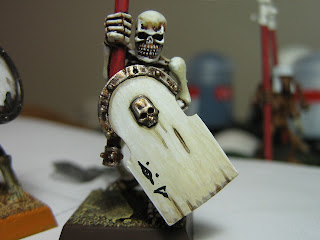 |
| Boylan's Ginger Ale and board games. This is from the first play testing session with Monkey (pictured) and Chuck (capturing the moment). Also pictured: Lisa, Ian Mackaynine, and Jean Harlow (making out in the far background). |
I've talked about the background to the game and I've rambled on about theory, but I haven't really discussed the mechanics to the game outside of a tight circle of people, so I'll talk about that a little now.
Broken Contract uses an Action system, similar to Zombicide, Wreck-Age, and even Infinity (though they call them Orders). Each Turn begins with the players drawing a numbered card for each Character on the board. The deck contains a card for each Character, so if the game has 8 Characters on the board, you would have cards numbered 1-8. This is how you establish Initiative Order in the game.
Starting with the Character who drew #1, you would work along completing each Character's Turn until you get to Character #8. Each Character has 3 Action Points with which they can perform either Actions or Interruptions (an Action performed out of Turn). You don't have to use all of a Character's Action Points when your Initiative comes up because you just might want to have Action Points remaining to perform those all important Interruptions.
The list of Actions includes the usual suspects, Walk, Shoot, and Attack, but it also includes a host of uncommon ones like Running Jump, Dive Roll, Apply Restraints, and Carry a Comrade. The Action system is geared for cinematic play and big drama. The list of Interruptions includes Defend, Parry, Dodge, Flee, Beg For Mercy and a bunch of other exciting options. Now you might ask yourself, "why would I ever Beg for Mercy?" Begging for Mercy allows you to make a Dealing Check to halt an Attack with desperate groveling or pathetic charm. Done at the right time it could spare your life for the moment while your opponent is out of Actions, the hope being that you can flip the situation to your advantage on the next Initiative draw. This makes for great "action movie moments".
Almost all of the Checks in the game require a simple roll of a D6 to keep the game play easy to process, and thus, fast and furious. The principle exception to this are Combat Actions as they require a roll to hit, and a roll to wound. The Checks all play off a list of 16 Stats from the obvious Move, Melee, Shoot and Strength; to less obvious ones like Dealing, Perception, Recovery, and Psyche. The robust list of Stats allows the Characters to be more varied with subtle distinctions of how they are specialized.
The list of possible Actions and Interruptions is extensive which does require some contemplation, but they all involve very simple mechanics so that once you get familiar with the list it becomes fairly intuitive how to carry them out. Of course, with so many options available you may find yourself making hard decisions as there will likely be multiple right and wrong answers for any given situation. This makes for a fun, exciting, and sometimes challenging time.
The Weapon list features a lot of non-lethal options as Security Officers and Enforcers are hoping to bring back escaping Breakers alive. So Arc Pistols and Shock Batons can Shock opponents leaving them Prone and twitching, while Neuro Grenades use gas to Drug the victims leaving them Stumbling around. Of course, you have to have big guns, so a Repeater Rifle with Rubber Bullets can easily Stun a Character (remove an Action Point for the remainder of the Turn) but it has a harder time Wounding. Meanwhile, the Breakers use a lot of improvised weapons like Shovels, Pick Axes, Pneumatic Drills, and "home brewed" Molotovs.
Like some of my favorite old games like Bloodbowl, Necromunda, and Gorkamorka, there are plenty of opportunities for Characters to trip and fall, break weapons in half, run out of ammo, or accidentally drop a Molotov at your own feet. All of these unfortunate events come from rolling natural "1"'s during some of the more dramatic Checks that take place during the game.
At the end of a normal Turn, you will likely have Characters defined as being Shocked, Down, Out of Action, or Seriously Injured. For all but the Seriously Injured there is a Recovery phase where Recovery Checks are made to see if their condition improves or worsens before going into the next Turn.
Play continues until the scenario has been successfully completed, or all of the Characters on one side are unable to act or off the board.
As one might expect, the board game will come packed with scenarios, and more will be planned for Expansions as well as downloadable content to keep game play varied and interesting.
That should give you a rough overview. The last play testing session on Monday yielded some tweaks but overall it plays pretty well, so I'm focusing on editing and writing more scenarios. That's it for now. Thanks for reading.
-Nick
PS. If you're curious about the previous articles:
I. Broken ContractII Broken Contract - Breakers
III. Broken Contract - Enforcers
IV. Broken Contract - Security Officers and What is Broken Contract?
V. Broken Contract - Board Design and Scenario Development
VI. Broken Contract - Play Testing and Revisions























